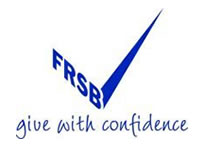Is the gravy train running out of steam?
In the first of a series of columns for UK Fundraising, Leo Rayman of Zalpha, looks at how successful fundraising charities must address improvement or reinvention.
There are currently over 167,000 main charities registered by the UK’s Charity Commission. This vast number spans the high profile organisations, the eight per cent that receive over 90 per cent of recorded income, to those smaller concerns with an annual income of £10,000 or less that may represent purely local interests.
Nevertheless, any charity today must effectively compete with 167,000 contenders for its share of public mind and wallet.
Advertisement
All charities may not be equal in size, but all causes are worthy. Ask a member of the public if they would like to help save a rain forest and the majority would say yes. Ask them if they want to help prevent blindness and again you would receive a positive response. But the public purse is finite, and to a great extent, charities are continually asking the public to choose between the rain forest and the child’s eyesight, pursuing the cure for cancer or protecting victims of domestic violence, and so on, ad infinitum.
Because all causes are worthy, charities have learnt to draw upon an individual’s connection with a particular cause. Fundraising has become a kind of alchemic hybrid of art and science in which experts unite to blend a mix of images and words delivered through the most effective channels to those who are most likely to respond to a particular appeal for help. So aware have charities become of the competition they face that they watch each other closely and mimic any novelty in execution, channel or initiative as far as their resources allow.
There is safety and danger in mimicry. There is much to be gained in modelling those who are successful, until the point where all contenders look, sound and feel exactly the same and become indistinguishable in a sea of others.
Fundraisers talk a great deal about donor fatigue and attrition rates, but charities cannot afford to despair. Nor can they give up. To do nothing in today’s climate is to ensure the demise of your organisation. Charities must pursue two courses of action – improvement and or reinvention.
In the columns that follow this I will explain what I mean by each and outline how they are done.
Leo Rayman is planning partner at marketing communications consultancy Zalpha.




